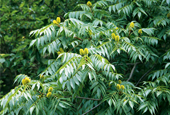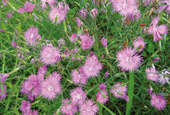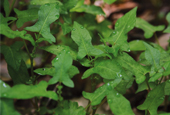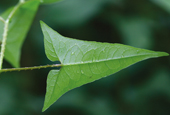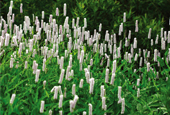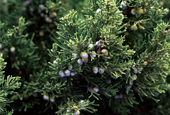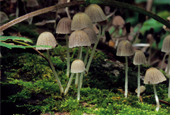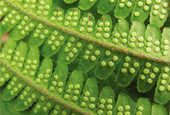-
 Korea.net's 24-hour YouTube channel
Korea.net's 24-hour YouTube channel- NEWS FOCUS
- ABOUT KOREA
- EVENTS
- RESOURCES
- GOVERNMENT
- ABOUT US
View this article in another language
- 한국어
- English
- 日本語
- 中文
- العربية
- Español
- Français
- Deutsch
- Pусский
- Tiếng Việt
- Indonesian
Flora & Fauna of Korea #16
Korea.net publishes a series of articles, “Nature You Meet in the Mountains,” about the peninsula’s mushrooms, insects, trees and herbs & flowers.
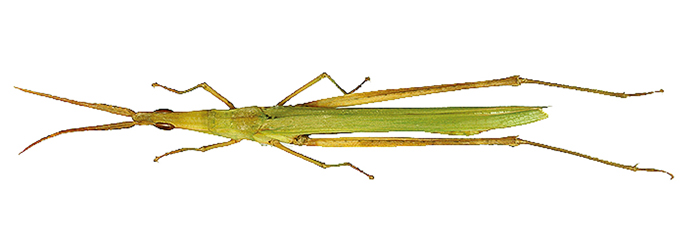
Insects
Name: 방아깨비 Bangakkaebi
Scientific name: Acrida cinerea cinerea (Thunberg)
Distribution: Korea, China, Japan, Taiwan
This grasshopper is about 54 to 89 millimeters in length. Compared to other grasshoppers, its body is a little longer. It is green or grayish brown. The long slanted face is prominent. The head is pointed upward and looks like a cone. There is a ridgeline at the back and sometimes three dark vertical lines can also be observed. The head stands out sharply between the compound eyes on either side. The body is widened in the middle and then again sharpens toward the end. The tip of the tail is dull. The chest is shorter than the head. The wings are relatively very long and the posterior parts of the front wings are pointy. Males are noticeably smaller than females, sometimes confusing people that they are different species.
Ecology: This grasshopper inhabits the mountains, fields and farming areas where gramineous plants are in abundance. Adults appear between July and October.
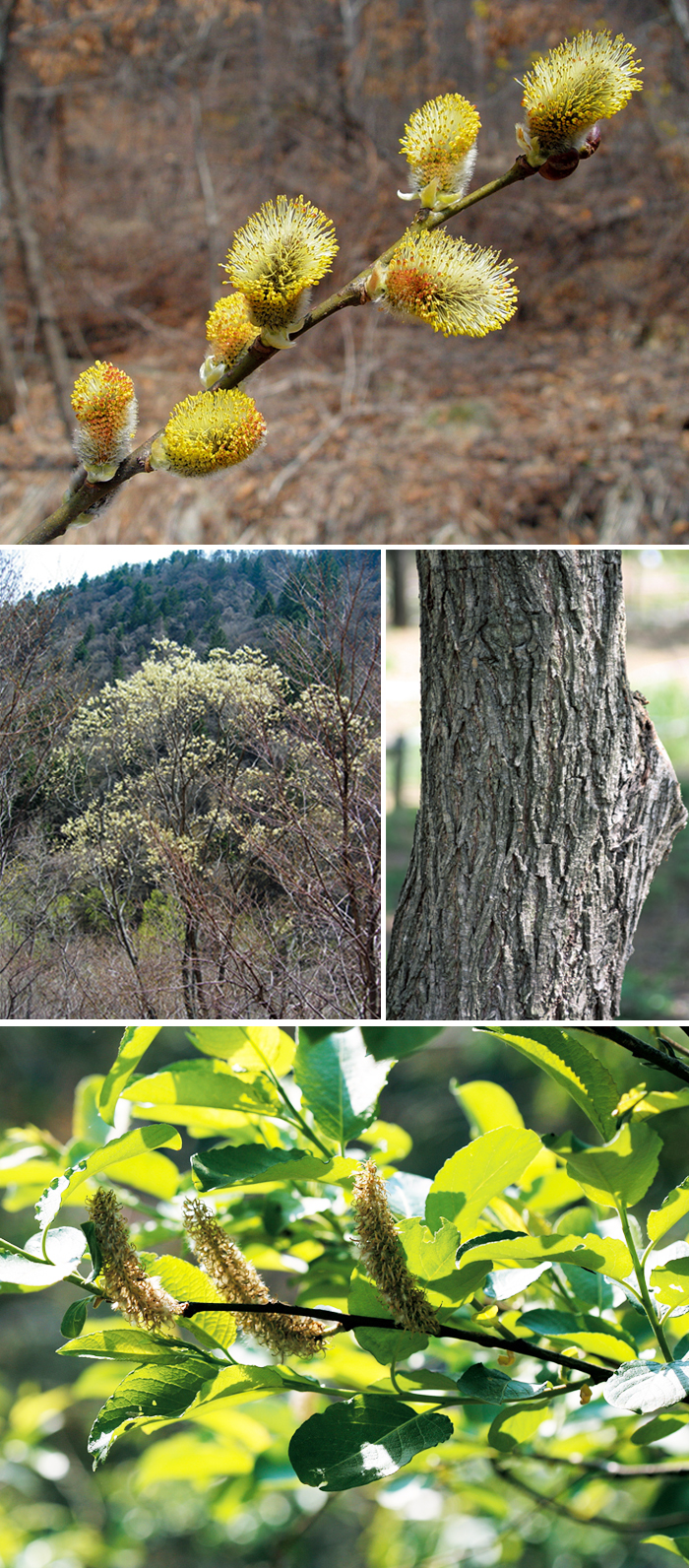
Trees
Name: 호랑버들, Horangbeodeul
Scientific name: Salix caprea L.
Type: deciduous broadleaf
Blooming season: March to May
Bearing season: April to June
Distribution: mountains nationwide
This tree grows to a height of 6 to 15 meters and is on average 15 centimeters around. The bark is grayish black. Young branches have sericeous, silky hairs on the surface. The leaves are alternating and oval-shaped. The underside of the leaves are densely covered in white villus. This dioecious tree gives bloom to a flower between the twig and leafstalk before the leaf grows. The tree bears an egg-shaped, sericeous capsule fruit.
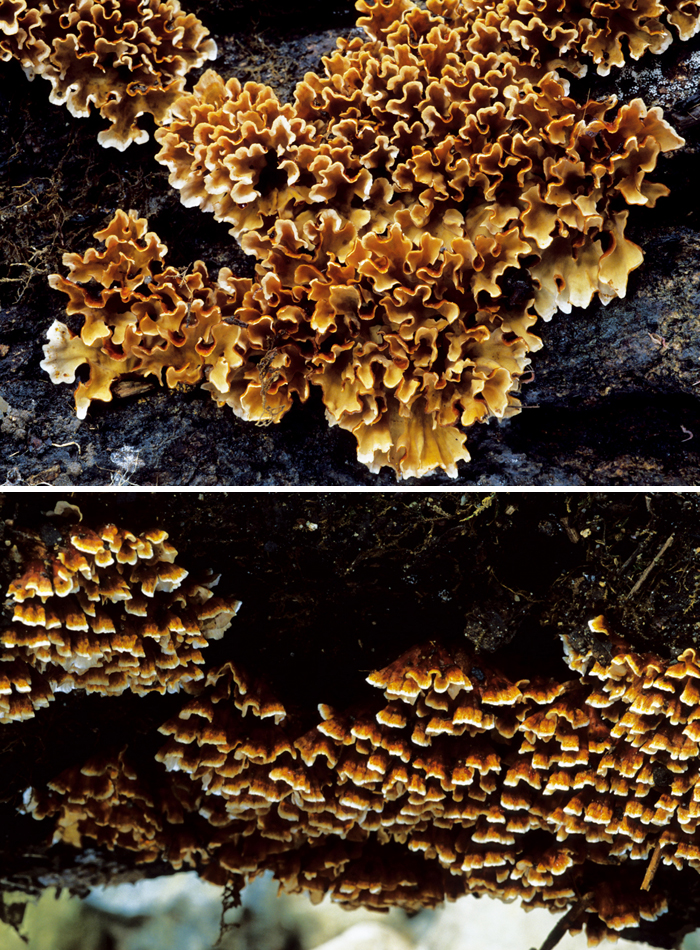
Mushrooms
Name: 너털거북버섯 Neoteol geobuk beoseot
Scientific name: Xylobolus spectabilis (Klotzsch) Boidin
Type: saprophile spore
Print: white
Inedible
This fungus grows from fallen or dead broadleaf trees. It is a white-rotting fungus, meaning that it turns the tree white after it takes all the nutrients. The fruit body lives for a year. The individual fungus grows overlapped in layers, like tiles. The pileus looks like a fan. It can be separated into radial shapes from the inside. When dried, each piece can be folded. The surface can be yellowish brown, reddish brown or black brown. The surface is glossy with vague ring-streaked patterns in radial shapes. The hymenium is wide, flat and looks like it's covered in a fine grayish-white powder.
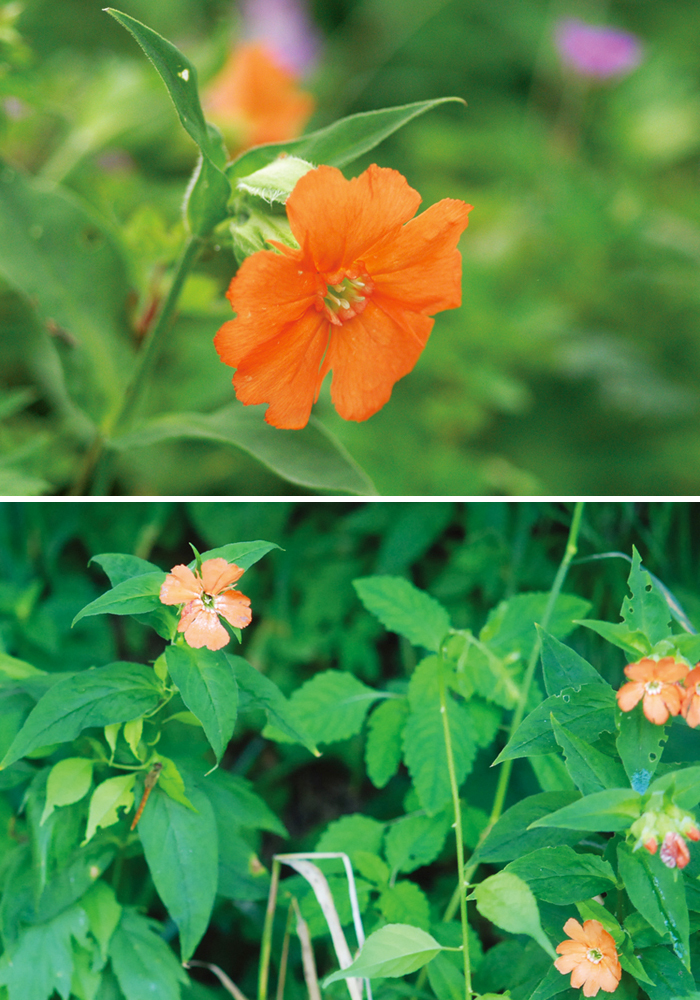
Herbs & Flowers
Name: 동자꽃 Dongjaggot
Scientific name: Lychnis cognate Maxim.
Blooming season: July to August
Distribution: mountains nationwide (except Jejudo Island, Ulleungdo Island)
This perennial can be found mostly in forests and in mountainside grass. It is 40 to 90 centimeters high. The branches grow straight with distinct segment marks covered in long hairs. The leaves are opposite each other, oval-shape and have no leafstalk. The flowers are quite big, orange and, unusually, face to the side, not upward like other flowers. Each flower has five petals, the edge of which is a little indented. The fruit is an oval capsule.
*This series of article about Korea’s insects, trees, mushrooms and herbs & flowers has been made possible through the cooperation of the Korea National Arboretum.
Korea.net publishes a series of articles, “Nature You Meet in the Mountains,” about the peninsula’s mushrooms, insects, trees and herbs & flowers.

Insects
Name: 방아깨비 Bangakkaebi
Scientific name: Acrida cinerea cinerea (Thunberg)
Distribution: Korea, China, Japan, Taiwan
This grasshopper is about 54 to 89 millimeters in length. Compared to other grasshoppers, its body is a little longer. It is green or grayish brown. The long slanted face is prominent. The head is pointed upward and looks like a cone. There is a ridgeline at the back and sometimes three dark vertical lines can also be observed. The head stands out sharply between the compound eyes on either side. The body is widened in the middle and then again sharpens toward the end. The tip of the tail is dull. The chest is shorter than the head. The wings are relatively very long and the posterior parts of the front wings are pointy. Males are noticeably smaller than females, sometimes confusing people that they are different species.
Ecology: This grasshopper inhabits the mountains, fields and farming areas where gramineous plants are in abundance. Adults appear between July and October.

Trees
Name: 호랑버들, Horangbeodeul
Scientific name: Salix caprea L.
Type: deciduous broadleaf
Blooming season: March to May
Bearing season: April to June
Distribution: mountains nationwide
This tree grows to a height of 6 to 15 meters and is on average 15 centimeters around. The bark is grayish black. Young branches have sericeous, silky hairs on the surface. The leaves are alternating and oval-shaped. The underside of the leaves are densely covered in white villus. This dioecious tree gives bloom to a flower between the twig and leafstalk before the leaf grows. The tree bears an egg-shaped, sericeous capsule fruit.

Mushrooms
Name: 너털거북버섯 Neoteol geobuk beoseot
Scientific name: Xylobolus spectabilis (Klotzsch) Boidin
Type: saprophile spore
Print: white
Inedible
This fungus grows from fallen or dead broadleaf trees. It is a white-rotting fungus, meaning that it turns the tree white after it takes all the nutrients. The fruit body lives for a year. The individual fungus grows overlapped in layers, like tiles. The pileus looks like a fan. It can be separated into radial shapes from the inside. When dried, each piece can be folded. The surface can be yellowish brown, reddish brown or black brown. The surface is glossy with vague ring-streaked patterns in radial shapes. The hymenium is wide, flat and looks like it's covered in a fine grayish-white powder.

Herbs & Flowers
Name: 동자꽃 Dongjaggot
Scientific name: Lychnis cognate Maxim.
Blooming season: July to August
Distribution: mountains nationwide (except Jejudo Island, Ulleungdo Island)
This perennial can be found mostly in forests and in mountainside grass. It is 40 to 90 centimeters high. The branches grow straight with distinct segment marks covered in long hairs. The leaves are opposite each other, oval-shape and have no leafstalk. The flowers are quite big, orange and, unusually, face to the side, not upward like other flowers. Each flower has five petals, the edge of which is a little indented. The fruit is an oval capsule.
*This series of article about Korea’s insects, trees, mushrooms and herbs & flowers has been made possible through the cooperation of the Korea National Arboretum.
Related Contents
Most popular
- China warmly welcomes first Korea-born giant panda Fu Bao
- First hearing-impaired K-pop act hopes for 'barrier-free world'
- Novelist Hwang's 'Mater 2-10' shortlisted for Int'l Booker Prize
- Expats could account for 7% of population in 20 years: report
- Nat'l Fire Agency picks 137 elite staff for deployment abroad









